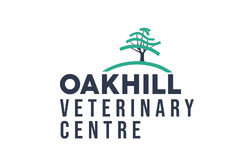Brachycephalic (Brachy) dogs
Dogs with a flat, wide-shaped head are said to be brachycephalic (brachy, meaning short and cephalic, meaning head). These flat-faced dogs e.g. Bulldogs, French Bulldogs and Pugs are popular worldwide, but many of them are affected by health issues that are linked to the shape of their head.
Brachycephalic health
The term Brachycephalic means short head, dogs with this conformation have a flatter face than other breeds. Typical brachycephalic breeds include English bulldogs, French bulldogs, Pugs, Pekingese, Boxers, Boston Terriers, Cavalier King Charles Spaniels, Brussels griffon, Boston Terriers, and Shih Tzus.
Despite their popularity, many of them are affected by health issues that are linked to the shape of their head. Some of these issues are seen as ‘normal’ for these types of dogs, but we believe that suffering should never be normal for any dog. If you have any concerns book an appointment to see vet Lisa Steinhage or Charlotte Furnell, our brachycephalic experts.
Potential health issues
Breathing problems
Some flat-faced dogs can develop a progressive, lifelong breathing problem (known as BOAS) that can impair their ability to exercise, play, eat and sleep.
Eye issues
Due to the head shape of some flat-faced dogs, their eyes may be more at risk of injury, reduced tear production or ulcers on the surface of their eye.
Skin problems
Some dogs with excessive wrinkling and skin folds may be more at risk of an overgrowth of bacteria and yeast, causing chronic skin irritation and infection.
Spinal problems
Some flat-faced dogs, specifically those with coiled, very short or absent tails, are at an increased risk of problems with their spines, causing it to curve or twist.
Heat stroke
Some flat-faced dogs are more at risk of overheating on hot days, and are more than twice as likely to develop heatstroke compared to other types of dogs.
Birthing problems
Birthing difficulties occur in some extremely flat-faced dogs due to the size the puppy’s head being too large to pass through the relatively narrow pelvis of the mother.
BRACHYCEPHALIC OBSTRUCTIVE AIRWAY SYNDROME (BOAS)
The soft tissue in the nose and throat of some brachycephalic dogs may be excessive for the airways, partially obstructing the airway and making it difficult for them to breathe normally (causing heavy panting or noisy breathing).
This condition is known as Brachycephalic Obstructive Airway Syndrome (BOAS) and is a progressive disorder that can impair a dog’s ability to exercise, play, eat and sleep.
Breathing issues can get worse with age, so learning about these issues and acting now will benefit your dog.
WHAT ARE THE SIGNS OF BOAS?
Brachycephalic dogs have severely compromised upper airways, which increases the resistance to airflow making it more difficult for them to exercise and regulate their temperature. The signs of BOAS are varied and can range in severity, and may include some or all of the following:
- Snorting or snoring at rest or during exercise
- Noisy breathing
- Excessive panting and difficulty breathing during exercise
- Exercise intolerance
- Poor tolerance to heat stress
- Restlessness at night
- Sleep apnoea
- Frequent retching, regurgitation, vomiting
- Collapse due to lack of air
Signs of brachycephalic airway syndrome may be mild or may eventually become so severe that life-threatening respiratory distress develops.
Dogs with BOAS struggle in hot weather more than other breeds as they are not easily able to regulate their temperature. These dogs can easily develop heat exhaustion, which can be fatal.
Several surgical procedures are available to support patients suffering from BOAS. The three main components of BOAS can be corrected surgically, usually with good to excellent results.
BOAS GRADING ASSESSMENT
The Kennel Club and University of Cambridge’s Respiratory Function Grading Scheme assesses Bulldogs, French Bulldogs and Pugs for brachycephalic obstructive airway syndrome..
The scheme advises owners if their dog is affected by BOAS and gives guidance to breeders on how to lower the risk of producing affected puppies. A selection of regionally approved assessors (vets trained especially in BOAS) have been appointed to carry out respiratory function grading on dogs of these breeds.
At Oakhill vets Lisa Steinhage and Charlotte Furnell are approved assessors for this scheme, offering these assessments at a competitive price.
FAQs
What do I need to bring to the assessment?
You will need to bring your dog’s Kennel Club registration certificate and microchip identification in order for your dog’s assessment to be completed. An assessment form will be completed by the regional assessor and a copy will be given to you following the assessment, with another copy sent to the Kennel Club for publication including on the Health Test Results Finder.
What happens during the assessment?
Your dog will be assessed by one of our specially trained vets, who will initially use a stethoscope to listen to your dog’s breathing while they are calm and relaxed. Your dog will then be encouraged to move around an exercise area at a quick pace for 3 minutes, either by the vet or yourself. The vet will then listen to your dog’s breathing again and will use a list of criteria to give a grade. Your vet will then discuss the findings with you.
